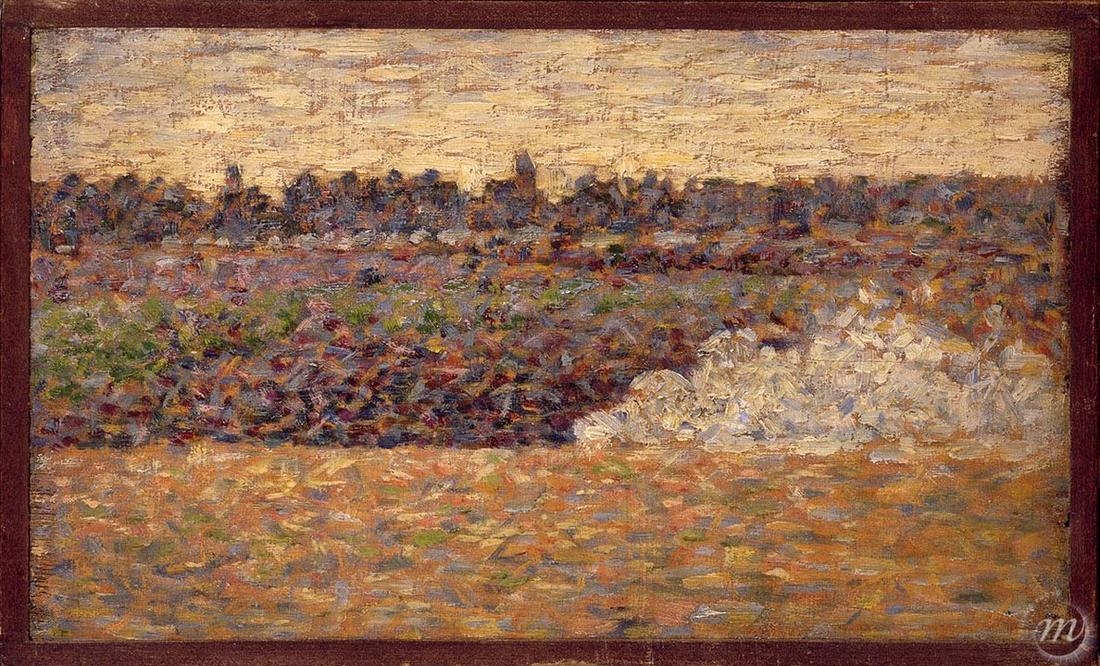The different tonalities, broken up on the canvas, are instantly reconstituted by the viewer's eye. Quite the discovery for a man who took his inspiration from Impressionism … only to go beyond it.
Seurat took impressionist research to the extreme and methodically applied the division of brushstrokes technique. His aim? To rationalise sensations, replacing the random character of emotion with the certainty of obtaining an unmoving and timeless work. He uses primary colours, organised in a system which, thanks to a clever set of combinations, gives rise to harmony. The result: the invention of pointillism. Seurat dreamt of recreating the aspirations of the modern world in painting. A rational world, in which humanity, society and nature obeyed inflexible laws.
In the wake of this experience, neo-impressionism from the 1880s onwards encompassed a combination of new movements, often the result of personal daring. Gaugin invented synthesism, the Fauvists and the Nabis revolutionised the laws of colour, while Van Gogh alone embodied all the liberties of an avant-garde genius.
This sketch, painted in 1885, was returned to France by Germany in 1994, then loaned to the Lille Palais des Beaux-Arts by the Musée d'Orsay in 1998. It is what is known as a "National Museums Recovery" listed work, or MNR. Recovered in Germany at the end of the Second World War, these works of art have no known owners. Nevertheless, clues lead us to believe that they belonged to French collections. The Lille Palais des Beaux-Arts is the holder of nine MNR labelled paintings (National Museums Recovery).

The different tonalities, broken up on the canvas, are instantly reconstituted by the viewer's eye. Quite the discovery for a man who took his inspiration from Impressionism … only to go beyond it.
Seurat took impressionist research to the extreme and methodically applied the division of brushstrokes technique. His aim? To rationalise sensations, replacing the random character of emotion with the certainty of obtaining an unmoving and timeless work. He uses primary colours, organised in a system which, thanks to a clever set of combinations, gives rise to harmony. The result: the invention of pointillism. Seurat dreamt of recreating the aspirations of the modern world in painting. A rational world, in which humanity, society and nature obeyed inflexible laws.
In the wake of this experience, neo-impressionism from the 1880s onwards encompassed a combination of new movements, often the result of personal daring. Gaugin invented synthesism, the Fauvists and the Nabis revolutionised the laws of colour, while Van Gogh alone embodied all the liberties of an avant-garde genius.
This sketch, painted in 1885, was returned to France by Germany in 1994, then loaned to the Lille Palais des Beaux-Arts by the Musée d'Orsay in 1998. It is what is known as a "National Museums Recovery" listed work, or MNR. Recovered in Germany at the end of the Second World War, these works of art have no known owners. Nevertheless, clues lead us to believe that they belonged to French collections. The Lille Palais des Beaux-Arts is the holder of nine MNR labelled paintings (National Museums Recovery).